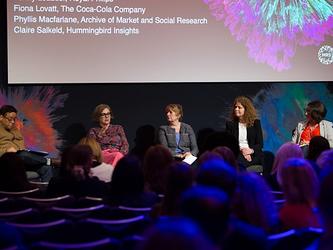How to prioritise strategic thinking in 2025

Do you ever feel like you want to make more of an impact? Having worked in large client-side corporates for 20 years, I know that making changes is neither quick nor easy. But whether you are client or agency side, large or small, we all need to be creating impact.
It is not simply about being excellent in our craft of market research. After all, a restaurant with tasty food is nothing without the delivery, service, venue and atmosphere to match it. Front of house delivery is as important as back of house production, otherwise there will be no-one coming in to eat the food! They need to work seamlessly together.
To gain impact, we need to take insights from tactical to strategic. Running a series of ad hoc projects to tackle the unending questions that corporations have simply leaves you stuck in a tactical loop. So how do we break the cycle?
Finding the time
Firstly, carve out some time away from the day-to-day to meet with your team, or stakeholders, to identify broader challenges on a longer-term horizon, for example three years. Where does the business want to get to? What are the big questions and unanswered problem statements that are currently in the way of reaching the goal?
Going back a few years at Virgin Media O2 (VMO2 ), the challenge was understanding target customer groups. The solution: a new customer segmentation. Resource needs to be carved out – financial and human – to take on strategic projects. One of the biggest challenges is protecting this resource when the deliverable is not immediate, but this must be maintained and the bigger goal kept in sight. A project such as a segmentation required us to allocate resource and stick with it to get actionable deliverables.
The end ambition must be tangible and significant enough to maintain this commitment. During a strategic project, which will typically run on for longer than an ad hoc project, you can maintain enthusiasm and bring people with you by updating senior stakeholders with bite-size information. Getting airtime can be another hurdle. Identify an executive sponsor who is on side and keep them involved, sharing insight in chunks. When you are then ready for sharing the results of the project, you have a supportive ally to kickstart the process.
Communicating with impact
To spread that corporate message, insight needs to be four things: relatable, memorable, tangible and viral.
- Relatable: What scenario or parallel can make this feel immediately understandable? For example, in the case of the segmentation – which segment are the audience to whom you are speaking? What creates that ‘aha’ moment of understanding where they can relate to it through personal experiences?
- Memorable: What ‘hook’ can you use to make it short and snappy and enable easy recall?
- Tangible: What collateral can you create that brings this to life and can be referred to? Videos, one pagers, short articles or podcasts can all make insight tangible to access.
- Viral: The tangible content needs to be easily shareable and accessed, not hidden on a drive or with a large file size or in a format unsupported by phone or tablet.
The final steps on gaining impact are around dispersion and unifying a company. There are many challenges here including volumes of people, location, logistics and egos getting in the way of alignment, not to mention continual change.
However, if you start from the top down, and position your insight in line with the corporate objectives, buy-in is more likely to be straightforward. Starting from the top gives a perception of exclusivity and creates word of mouth, opening doors for you to spread the word.
To drive that impact, create exclusivity, excitement and interest. The goal is to get a ‘hot off the press’ vibe. Another tip to create interest and excitement is to leave breadcrumbs, i.e. teaser comments or communications to build awareness, interest and buy-in. This will smooth the way for landing your insight.
Making a lasting imprint does take an awful lot of time and effort. Increasingly we spend as much time, if not longer, landing a project and the insight as we do in the creation of the insight. Making sure insight lives and breathes requires tenacity, and often, a lot of repetition and broad socialisation. So be prepared to put the hours in! Remember the starting objective – shifting business strategy. This won’t happen overnight.
Claire Rainey is head of insight at Virgin Media O2

We hope you enjoyed this article.
Research Live is published by MRS.
The Market Research Society (MRS) exists to promote and protect the research sector, showcasing how research delivers impact for businesses and government.
Members of MRS enjoy many benefits including tailoured policy guidance, discounts on training and conferences, and access to member-only content.
For example, there's an archive of winning case studies from over a decade of MRS Awards.
Find out more about the benefits of joining MRS here.














0 Comments